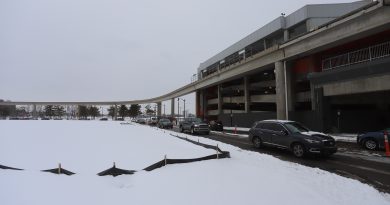Right of Way: Race, Class, and the Silent Epidemic of Pedestrian Deaths in America
Angie Schmitt’s Right of Way: Race, Class, and the Silent Epidemic of Pedestrian Deaths in America (2020) is a must-read for anyone interested in city planning, mobility, or transportation. The book is an exhaustively researched examination of how and why built environments are increasingly hostile to pedestrians and cyclists, looking at everything ranging from public policy interventions to the proliferation of lethal SUV’s.
Schmitt, who now runs her own consultancy working on these issues after heading up Streetsblog, looks at a number of cases from around the country and, indeed, the world, many of which I had heard of but none of which I had seen covered in such depth, of pedestrians and cyclists killed by cars. There are cases more familiar to planning nerds such as I, like the death of Elaine Herzberg, who was killed by an Uber autonomous vehicle in Arizona. Or, the case of Samara Banks, who, along with most of her family, was killed by a speeding guy (from my hometown, actually– who was later busted again for Medicare fraud, apparently?). There are also stories I hadn’t heard of.
These issues humanize the process of citybuilding but they also remind us that cities should be built for people, not these hulking machines that we’re for whatever reason required to own and maintain. Schmitt doesn’t say “cars are evil”– she provides a road map for how cities can be built safer and for people.
The book goes through the various likes of structural issues in policy (funding disproportionately directed toward highways and cars, fragmentation and siloing, etc.), professional best practices (invented by old white men, disproportionately), and other complicating factors (geospatial variables correlated with demographics, for example).
Death in Discourse
Schmitt does an excellent job of exploring the myriad of factors that contribute to fatal crashes as well as the aftermath. There are cases where the driver was clearly and entirely at fault. In many cases, the driver is at fault if we assign more responsibility to someone operating a 3000-lb. vehicle, but there are also a lack of design factors that could mitigate the probability of crashes. There are other cases where it’s not clear whether the driver was entirely at fault, and the design factors are less about street design and more about, say, the vehicle itself.
I was also waiting for that ‘zing’ moment when she nailed the trend in journalism that virtually always exonerates drivers through the use of the anonymous passive voice (“a pedestrian was struck and killed” instead of “a car/driver struck and killed a pedestrian”), and I was not disappointed. There are a number of great examples of how politicians and engineers alike often blame the victim. There’s an important comparison to European jurisdictions that assign greater responsibility to operators of vehicles.
An engineer friend of mine often mocks photos of things like bollards or signs that have been smooshed by cars by asking, “But what was the sign wearing? Was it wearing bright colors?!” Schmitt looks at this from a number of angles and she also looks at the role of SUV’s– stay tuned for my review of former NYT Detroit bureau reporter Keith Bradsher‘s well-aged book on this subject (which she also cites).
Mobility and The City
Schmitt critiques the MUTCD model of traffic design, which is about optimizing flow rather than safety. The idea, which has come up frequently in my capstone research, is that most of the engineers– mostly older, white men- designing these things designed them a long time ago, and never changed. The siloing of technical and policy factors is also important. These critiques shouldn’t be controversial. I kind of wished for a bit more depth here, though, as there are a lot of tools in any city planner’s toolkit for designing safer streets and figuring out how to make cars slow down and make cities more pedestrian-friendly. There are also oodles of case studies for how this can be done well and how it can be done poorly.
Transit-oriented development, for example, is a trendy phrase. While it has sometimes been applied to things like “let’s build light rail to a shopping mall,” it can also appropriately be applied to the notion of developing higher densities around fixed-route transit. I think this topic could be explored more, as Schmitt makes some mention of the geospatial issues that correlate unsafe neighborhoods to housing typology. But this is something that cannot be emphasized enough– real estate is an important part of the puzzle. So, too, is transit an important piece, and I think mention of that is a bit lacking in the book.
Conclusion
These aren’t really “cons” of the book– it’s more that there are a lot of these things that are worth deeper exploration. The book handily accomplishes all of its goals and more by giving us a comprehensive look at a leading public health issue, responsible for tens of thousands of preventable deaths every year, that seems to be considered by many policymakers to be an acceptable price to pay for the #freedom of being able to drive a giant SUV. This is absolutely worth checking out for anyone who is a pedestrian, cyclist, planner, or even vaguely interested in traffic safety. It’s a quick read and one that, I hope, can inform better planning, policy, and design decisions for years to come. (★★★★½)
Check out Angie Schmitt on Twitter and LinkedIn. You can find the book on Amazon or find a local bookstore. In Detroit? Check out Pages Bookshop, 19560 Grand River Ave, Detroit, MI 48223, or Source Booksellers, 4240 Cass Ave UNIT 105, Detroit, MI 48201. Both have in-store and pickup options available. If you’re in Cleveland, there are plenty of good independent options, too.



